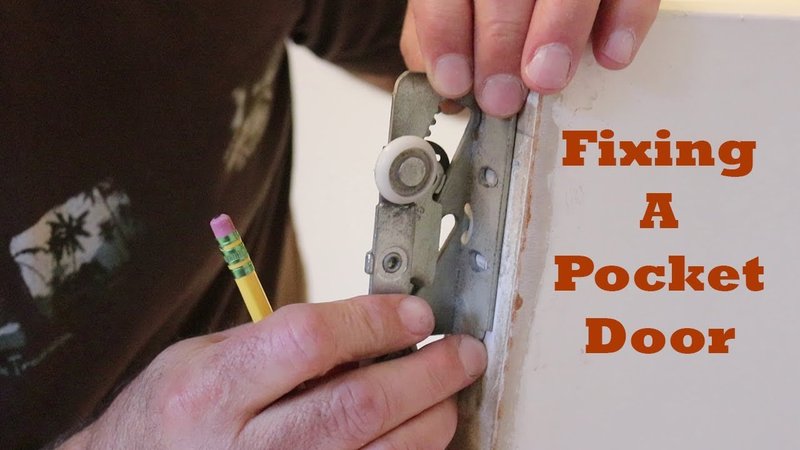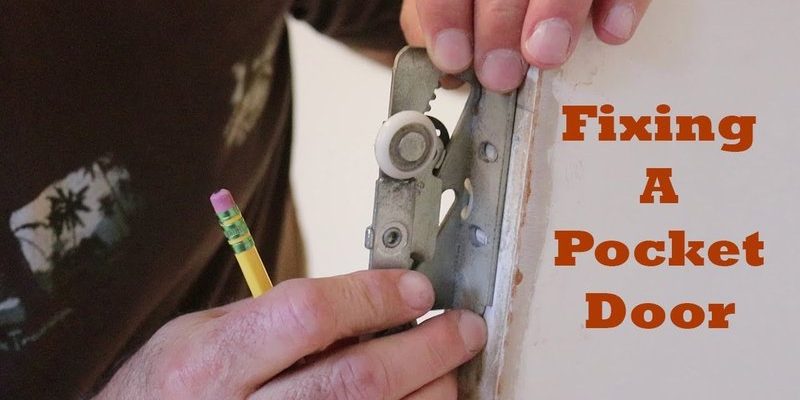
A pocket door is a type of sliding door that disappears into the wall when opened. These doors are handy, especially in tight spaces, freeing up floor space. However, like anything, they can have their quirks. If your door is catching, it could be due to a misalignment, debris in the track, or even a problem with the rollers. Let’s dig into how you can troubleshoot this issue step-by-step.
Understanding How Pocket Doors Work
Before diving into troubleshooting, it’s good to understand the mechanism behind a pocket door. Picture a traditional door swinging on hinges. Now, imagine that instead of swinging, it slides into the wall. This sliding action relies on a track system and a few rollers that help the door glide seamlessly.
When your pocket door functions properly, it should move along this track without any resistance. However, over time, dirt, debris, or misalignment can cause the door to catch. Understanding this basic setup will make it easier to figure out what’s going wrong.
Components of a Pocket Door
A typical pocket door system includes the following parts:
- Track: The metal or plastic rail that guides the door.
- Rollers: Small wheels attached to the door that slide along the track.
- Framing: The structure that holds the pocket door mechanism in place.
- Stop Blocks: Pieces that prevent the door from sliding too far.
Each of these components plays a vital role. If one isn’t working correctly, it could lead to the door catching.
Identifying the Problem
Now that you understand the components let’s get to the heart of the matter: identifying what’s causing your pocket door to catch. Start by observing the door closely. Does it stick at one specific point, or does it not move smoothly at all?
One simple way to diagnose the problem is to visually inspect the track for any dirt or debris. It’s not uncommon to find small bits of dust, pet hair, or even the occasional lost toy wedged in there. If you see anything unusual, that’s likely your culprit.
Checking the Alignment
Another common issue is misalignment. Sometimes, the door might get bumped, or the rollers can wear down, causing the door to sit lower or higher than intended. To check the alignment, do the following:
1. Inspect the Height: Close the door and check if the top of the door is level with the wall.
2. Look for Gaps: Are there any noticeable gaps between the door and the wall?
3. Test the Rollers: Gently lift the door to see if it moves up or down.
If you spot misalignment, it might be time to adjust the rollers.
Cleaning the Track
Cleaning the track is one of the easiest ways to resolve a sticking pocket door. Here’s how you can do it:
1. Gather Your Tools: You’ll need a vacuum with a nozzle attachment, a damp cloth, and perhaps some mild detergent.
2. Clear Debris: Use the vacuum to suck out any loose dirt from the track.
3. Wipe Down: Use the damp cloth to wipe the track and remove any stubborn grime.
Once clean, try sliding the door again. You might be surprised how much smoother it feels!
Lubricating the Rollers
After cleaning, it’s a good idea to lubricate the rollers. This helps reduce friction and improve the overall performance of the door. Here’s how to do it:
1. Choose a Suitable Lubricant: Look for a silicone-based spray or a similar product. Avoid oil-based products, as they can attract more dirt.
2. Apply Sparingly: Lightly spray the lubricant on the rollers and along the track.
3. Test the Door Movement: Open and close the door several times to ensure it glides smoothly.
This little step can make a significant difference!
Adjusting the Rollers
If cleaning and lubricating doesn’t solve the problem, you might need to adjust the rollers. Here’s how:
1. Locate the Adjustment Screws: Most pocket doors have screws that allow you to raise or lower the door.
2. Use a Screwdriver: Turn the screws clockwise to raise the door or counterclockwise to lower it. Small adjustments can yield big changes.
3. Test the Fit: After each adjustment, check the alignment and sliding action of the door.
Be patient here; it might take a couple of tries to get it just right.
Replacing Damaged Components
If you’ve tried all the above and the door still catches, it might be time to replace some components. Look for:
– Worn Rollers: If the wheels look cracked or worn, they might not roll properly. Replacing them can solve the issue.
– Damaged Track: A bent or damaged track can prevent smooth sliding. You may need to replace the track entirely.
Most hardware stores carry replacement parts, and they’re fairly easy to install.
When to Call a Professional
If you’ve gone through all these steps and the door still isn’t cooperating, it might be time to call in a professional. Sometimes, underlying structural issues could be affecting the door’s function. A skilled contractor can assess the situation and offer solutions.
Embarking on troubleshooting your pocket door can feel daunting, but with the right tools and knowledge, you can often save yourself a trip to the handyman. Remember, the key is to approach the problem step-by-step, keeping things organized and relaxed.
In conclusion, a pocket door catching on something in the wall can be quite the hassle, but most of the time, it’s an easy fix. With a little elbow grease and the right fixes, you’ll have that door sliding like new in no time! Don’t hesitate to tackle it yourself, and trust that you’re capable of handling it. Happy troubleshooting!
